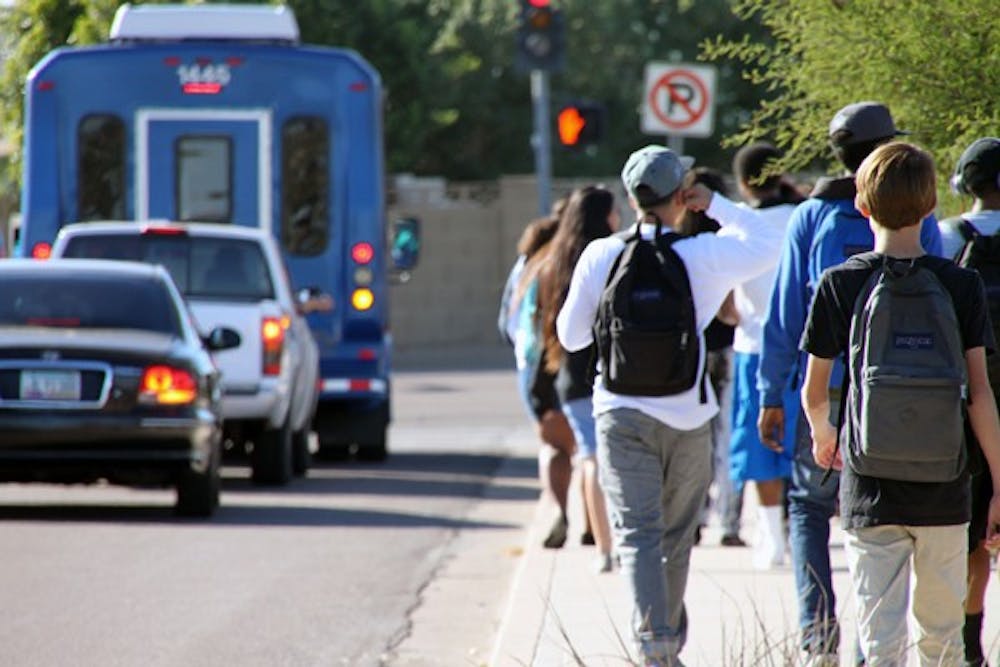With poverty reports on Tempe and Arizona revealing a grim situation, Tempe education partners are seeking to reach out to lower-income communities for input on their needs.
High school graduates in Arizona will increase by approximately 50 percent in the 2014-15 school year compared to numbers recorded in 2004-05, according to a 2008 report from the Western Commission for Higher Education.
Jim Rund, the senior vice president for Educational Outreach and Student Services at ASU, said this increase will place pressure on the Tempe public school system, particularly its ability to serve the growing population of low-income families.
“Education isn’t a special interest,” Rund said Monday at the Tempe’s Education Partnerships Council Committee meeting at Tempe library. “Education is an economic and a moral imperative.”
Rund presented data from various sources depicting the economic situation of the Tempe population in 2010.
According to the 2010 American Community Survey One-Year Estimates of Poverty status for the past year, 38.1 percent of Tempe children under 18 years old live below the poverty level. This is an increase from the 19.8 percent in 2009.
The Federal Poverty Level was established in 2010 at an annual gross income of $22,050 for a family of four, according to the Association of Arizona Food Banks.
The same survey also estimates that 26.1 percent of Tempe’s overall population lives below the poverty line, which is several points higher than Phoenix’s 22.5 percent.
Tempe councilwoman and committee chair Robin Arredondo-Savage praised the use of data to tailor educational improvements.
“This is a really great tool for us to be able to use when we’re addressing our community,” Arredondo-Savage said. “This is who we are.”
Rund also presented a colored visual map of 2010 census data provided online by The New York Times, which gives a picture of the link between education and income.
The census zones within Tempe with a median income of at least $50,000 are also areas where 40 percent or more of the population hold bachelor’s degrees or higher.
Rund said the data demonstrates that schooling plays a crucial part in the economic prosperity of Tempe.
Data compiled in 2009 from the National Center for Children in Poverty shows that 48 percent of Arizona children live in low-income families, meaning their families have incomes less than $44,100.
Committee members said they see poverty reflected in the schools, but are trying to find a relatable way to communicate with students and parents in difficult financial situations.
“If you look at the free and reduced lunch rates for both of the (Tempe Elementary and Kyrene school) districts, they have been increasing every year for 10 years, if not more,” said Lynette Stonefeld of Arizona’s Communities In Schools, a nonprofit group that works to ensure school retention.
Stonefeld said this is a problem that will not be solved immediately once the economy improves.
Christine Busch, superintendent of Tempe Elementary School District, said she feels most Tempe residents are entirely unaware of the economic issues students’ families face. She said even her own employees are often in the dark about the issues.
David Schauer, superintendent of Kyrene School District, agreed that they needed to hear the real issues from the families themselves.
“We’ve got to figure out how to get those people sitting here with us and talking about what can we do, because this is an emergency,” Schauer said.
However, the committee also noted that the city lacks the funding to do all that is needed and needs to carefully allocate money to improve public education.
“I think sometimes there are unintended consequences with where we put our money as a city,” Tempe Police Cmdr. Kim Hale said. “As we continue to cater to low-income families, we are going to get more low-income families moving to Tempe.”
The committee will meet again in early December to discuss further ways to share resources between Tempe schools and get more involvement from parents.
Reach the reporter at sksmith9@asu.edu
Click here to subscribe to the daily State Press newsletter.





